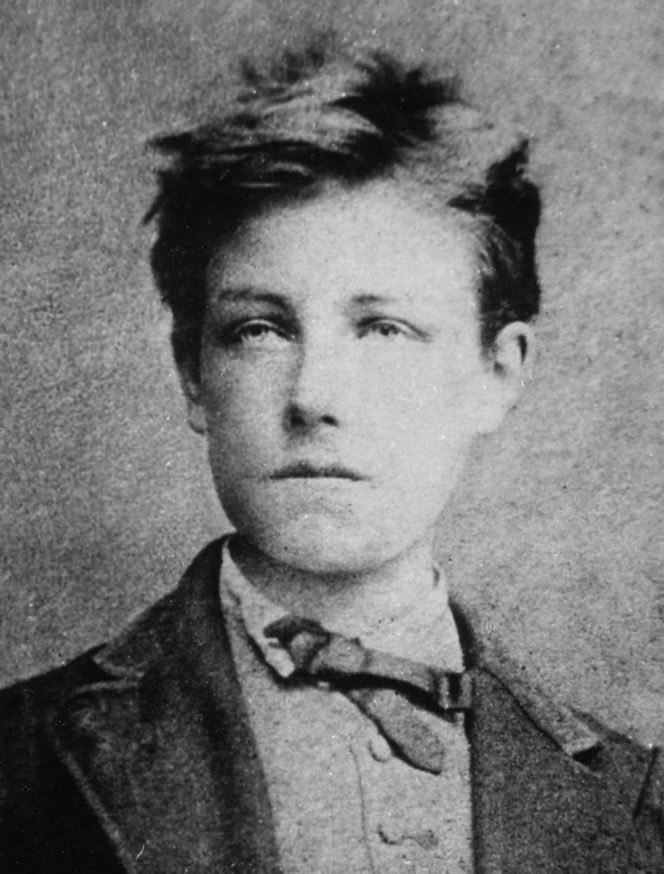The Cave, McKenzie Wark


These cards evolved from our separate observations on the principles underlying what we were doing. Sometimes they were recognized in retrospect (intellect catching up with intuition), sometimes they were identified as they were happening, sometimes they were formulated.
They can be used as a pack (a set of possibilities being continuously reviewed in the mind) or by drawing a single card from the shuffled pack when a dilemma occurs in a working situation. In this case,the card is trusted even if its appropriateness is quite unclear. They are not final, as new ideas will present themselves, and others will become self-evident.
First Deck (1975)
One article, among many, about Oblique Strategies.

By Steven Kurutz
Published Aug. 14, 2021Updated Oct. 4, 2021
Last fall, Randi Hipper decided to, as she put it recently, “go in-depth with the crypto space.” After hearing about NFTs on Twitter and other social media platforms, Ms. Hipper, then a 17-year-old senior at Xaverian High School in Brooklyn, began releasing her own digital artworks — cartoonish and self-referential pieces showing her cruising in a car with a Bitcoin license plate or riding the Coney Island Wonder Wheel.
Ms. Hipper comes up with the concepts and collaborates with digital artists, including a teenage boy in India who goes by Ajay Toons, offering the works for sale through the NFT marketplace Atomic Hub. An NFT, or a nonfungible token, is a digital file created using blockchain computer code. It is bought using cryptocurrency such as Ether or Wax, and exists as a unique file unable to be duplicated, often just to be admired digitally.
“Right now, I’m trying to do one drop a week,” said Ms. Hipper, who now goes by Miss Teen Crypto and has since turned 18. “I try not to overload my feed, my collectors.”
The 40-year-old digital artist known as Beeple may have grabbed headlines last spring when one of his works sold at Christie’s for $69 million, but NFT markets like Atomic Hub, Nefty Blocks and OpenSea are filled with creators barely old enough to drive. They promote their work not through blue-chip galleries or auction houses but on social media.
“In the NFT world, anyone can post online, market themselves on Twitter and build a following from a young age,” said Griffin Cock Foster, who is 26 and lives in New York City. He and his twin brother, Duncan, founded the NFT marketplace Nifty Gateway.
Duncan said, “The comparison I like to make is it’s similar to the way TikTok is causing people to be discovered at a really young age.”
In June, Nifty Gateway did a drop called Nifty Next Generation. It featured the work of jstngraphics, a 17-year-old from Washington State, and Solace, an 18-year-old from Soledad, Calif. Both teenagers have been making NFT art for less than a year, and first drew attention by selling through the online auction site SuperRare. The works of both artists, which ranged in price from about $1,000 to $7,250, sold out.

“I was tossing out random stuff to see what was going on,” said Justin Bodnar (jstngraphics), who makes surreal landscapes and what he described as “Tron-style” art. “Then I got onto SuperRare and things started blowing up.”
Solace, whose real name is Carlos Gomez, began making NFTs on a borrowed iPad because he didn’t own a home computer. “I saw how digital art was being put out there. It was being seen by people and valued,” he said. “I come from poverty my whole life. NFTs changed my life forever.”
Solace and jstngraphics seem like oldsters compared to Benyamin Ahmed, a 12-year-old boy from suburban London, who released an NFT collection last month. The project, “Weird Whales,” featured 3,350 pixelated whales, each with distinct traits, some rarer and thus perceived to be more valuable. The collection, sold out and earned Mr. Ahmed tens of thousands in crypto.
“I got interested in the NFT space because originally I thought it was cool as an online flex,” he told the website Decrypt.
Such improbable success stories have inspired enterprising young people to join the NFT boom. For some, it’s a fun after-school hobby. For others, it’s a perceived gateway to a career as a full-time artist or crypto entrepreneur.
Magnus Aske was a 19-year-old sophomore at Babson College in Wellesley, Mass., when he got sick with Covid-19 last March, around the time of the Beeple sale. He spent his 10 days in quarantine learning everything he could about NFTs, and came up with a project involving the antiquities collection of a foreign country (his classmate had connections within the government).
“For me, it’s not even about the money. It’s working with a team, seeing something through from ideation to creation and seeing a sale,” said Mr. Aske, who is now 20 and studying finance and entrepreneurship.
Josh Kim is a rising senior at Colby College who founded the Cubby, an online marketplace for college students to sell their art. Mr. Kim plans to introduce NFTs in the coming months, which, he said, will further the site’s mission to help young creators “achieve financial success,” or at least earn extra money while in school.
Indeed, for some teenagers, making NFTs and other forms of digital art has become the new summer job, a modern take on bagging groceries or working at a fast-food restaurant. One 15-year-old in Brooklyn draws custom art for users of Twitch, the livestreaming platform popular with gamers.
“It’s mostly for spending money,” he said.
Griffin Cock Foster likened the teen experimentation with NFTs to “kids hacking around with Napster in the early 2000s,” adding, “They had a preview of what the world was going to look like. Pay attention to what teenagers are hacking around on, on nights and weekends and in the summer.”

The most popular and successful young NFT artist is Victor Langlois, a transgender 18-year-old who goes by FEWOCiOUS, or Fewo to his fans. He makes digital art that chronicles his difficult childhood and struggles with gender identity and his transition.
Last summer, Fewo started selling work on SuperRare and built a following there and on Nifty Gateway. Soon, he came to the attention of Noah Davis, the digital art specialist at Christie’s, who arranged an auction of his work in June. The online sale of five lots, entitled, “Hello, i’m Victor (FEWOCiOUS) and This Is My Life,” earned $2.16 million, turning Mr. Langlois into an art-world star.
“Victor has been alive about as long as artists are making art before they get to Christie’s,” Mr. Davis said.
Card 1 of 7
A glossary. Cryptocurrencies have gone from a curiosity to a viable investment, making them almost impossible to ignore. If you are struggling with the terminology, let us help:
Bitcoin. A Bitcoin is a digital token that can be sent electronically from one user to another, anywhere in the world. Bitcoin is also the name of the payment network on which this form of digital currency is stored and moved.
Blockchain. A blockchain is a database maintained communally, that reliably stores digital information. The original blockchain was the database on which all Bitcoin transactions were stored, but non-currency-based companies and governments are also trying to use blockchain technology to store their data.
Cryptocurrencies. Since Bitcoin was first conceived in 2008, thousands of other virtual currencies, known as cryptocurrencies, have been developed. Among them are Ether, Dogecoin and Tether.
Coinbase. The first major cryptocurrency company to list its shares on a U.S. stock exchange, Coinbase is a platform that allows people and companies to buy and sell various digital currencies, including Bitcoin, for a transaction fee.
Crypto finance. The development of cryptocurrencies spawned a parallel universe of alternative financial services, known as Decentralized Finance, or DeFi, allowing crypto businesses to move into traditional banking territory, including lending and borrowing.
NFTs. A “nonfungible token,” or NFT, is an asset verified using blockchain technology, in which a network of computers records transactions and gives buyers proof of authenticity and ownership. NFTs make digital artworks unique, and therefore sellable.
Understanding NFTs and their value as digital objects comes naturally to a generation raised online, Mr. Davis added. “I consider myself pretty digitally native, but I can still recall floppy disks. That’s cuneiform tablets to Victor. He grew up completely immersed in this.”
For Ms. Hipper and others like her, Fewo is “such a role model for Gen Z,” she said. “He came into NFTs and blew my mind. The fact that he was able to create a platform, for me, it’s inspiring.”
When the stock market was booming and Bitcoin was above $60,000 earlier this year, Ms. Hipper said, one of her NFTs sold for $1,000. These days, her art sells on Atomic Hub for as little as 125 Wax, or $21. She views her pieces as tradable collectibles, similar to Pokémon cards, a common outlook among young creators. Indeed, NFT works can sell for as little as $1.
Brent Lomas, who founded the Queenly NFT, a site that sells the work of L.G.B.T.Q. artists, tracks the NFT space closely, and said that low prices are a deliberate strategy by young creators, who, in many cases, are appealing to collectors their own age.
“It’s partly to get virality,” Mr. Lomas said. “These kids are pretty savvy. They can look at other drops and model their work after it. If you’re young and you get social media and meme culture, it is possible for you to go viral with your first drop and get attention and make money.”
Mr. Davis said that Fewo was selling pieces for tens of dollars only last year. For a digitally savvy teenager, earning that kind of money for making NFTs beats mowing grass. It’s “unique to our present moment,” Mr. Davis said. “If you can make movie theater money for your summer vacation from your creativity, I can’t think of anything more utopian or American than that.”
Ms. Hipper estimates that so far, she’s earned “a few hundred dollars, max,” because she has to pay her artists. But, she said, for now the money is secondary to learning the ropes.
“I wanted to perfect my skills, knowing how to do a drop,” she said. “You need to know how to set up your store. How to create a template.”
She added, “I just graduated high school. My plan is to go full-time crypto.”
This very short text is from Recollected Work, a retrospective of projects by the Dutch designers Mevis and van Deursen. The text is a sort of transcription produced by Paul Elliman (the editor of the book) after talking with the designers.
Read the text and consider the following:
Mevis and van Deursen describe their design practice as a game playing activity. How does this game work? What do you think of the entanglement of freedom and constraint which their description implies? How can a “living voice” be engendered in this sort of practice?
Think about your own experience as a designer. Consider a specific project — in what sense did restrictions structure the work? How might you imagine future work in which “content”, “form”, and “production” conscientiously become constraint variables which you set in order to play the game of your work?
Write and print a 100 word response on a single letter-sized sheet of paper. Use one typeface that begins with the letter “T”.
